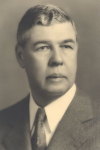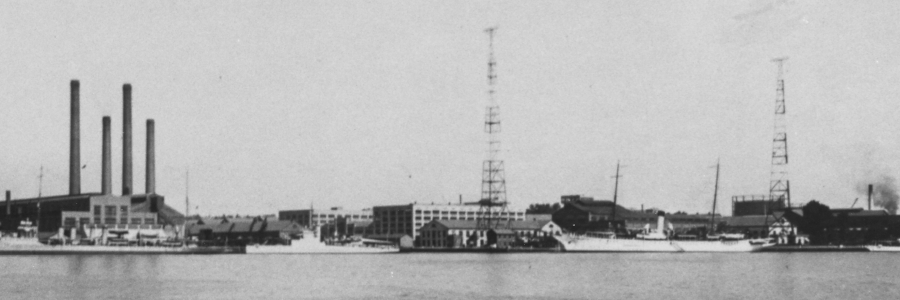 A few weeks ago, I gave a talk about the Navy Yard and its history for the Smithsonian Associates. During the question period at the end, I was asked about radio research at the Navy Yard. I had not done any research in that direction yet, so here is my attempt to rectify that oversight.
A few weeks ago, I gave a talk about the Navy Yard and its history for the Smithsonian Associates. During the question period at the end, I was asked about radio research at the Navy Yard. I had not done any research in that direction yet, so here is my attempt to rectify that oversight.
Research on radio waves had begun as early as the 1860s, but it was not until 1896 that Guglielmo Marconi managed to actually transmit data wirelessly. Unsurprisingly, the first major users of this new technology were those who traveled the seven seas, and less than 20 years after Marconi’s patent was granted, radios were used to summon help to the sinking Titanic.
In the meantime, the Navy had begun their own tests, including building two radio stations, one at the Navy Yard, the other at the Naval Academy in Annapolis. These two installations were to be used to test equipment, and the systems were carefully grounded to give the best possible data. Tests with carious equipment was made between the two stations, later ships were used off of Annapolis to see how far the equipment from various manufacturers would transmit. Eventually, a 15-kw transmitter from the Massie Telephone and Telegraph Co. of Rhode Island was installed.
A few years later, Benjamin Franklin Miessner, an electrician’s mate stationed at the Washington Navy Yard made several modifications to the available receivers that dramatically improved their performance.

The Washington Navy Yard, showing the two masts of the radio receiver ca. 1927. (history.navy.mil)
With the outbreak of the war in Europe in 1914, the US military realized that they were well behind in the use of this new technology, and a push was made to improve what they had. Thus, the Washington Navy Yard was given the task of bringing their systems up to date. Huge leaps in technology were made between 1913 and 1917, but issues having to do with patents still kept the government from making the improvements it needed.
In 1915, the Navy Yard was deemed a “Radio Test Shop” and put under the direction of Lieutenant (junior grade) William A. Eaton. With his small staff and in spite of other duties, they were able to drive the improvement of the radio equipment. Most important among the staff was Louis A. Hazeltine (pic) head of the Stevens Institute of Technology Electrical Engineering department Hazeltine was listed as a ‘consultant,’ but was key in designing a new receiver, the SE 1420, which became the standard radio set used by the Navy throughout the war and afterward. Starting in 1923 it was sold commercially by the Hazeltine corporation.
That same year, all naval radio research was moved to the Naval Research Laboratory in Anacostia, ending this work at the Washington Navy Yard.
